The National (Old Course) Review
Cape Schanck, Victoria, Australia.
The National Golf Club was formed back in the late 1980's, and was the brainchild of David Inglis, and several other Huntingdale GC members. They mapped what they described as "A New Direction in Australian Golf". The National was Australia's first equity / share-based golf club. US golf course architect Robert Trent Jones Jnr was commissioned to build two courses, a task passed up by Pete Dye, who was originally considered, but declined to travel to Australia. Trent Jones Jnr designed and built a public course (now under the ownership of the RACV), and a private course for members of The National. With expansion from an 18 hole club to a 54 hole facility, Trent Jones Jnr's work (opened for play in 1987) is now known as National (Old).
Sited at Cape Schanck, on rugged, elevated, windswept land, the course traverses heaving topography. Its design marries with this perfectly. The course is built on a grand scale, with broad playing areas, expansive, natural bunkering, large curvaceous greens and many rises and falls encountered throughout the round. Native tea trees, banksias, acacias, ancient Moonah trees, and other coastal flora, along with consistently high levels of course presentation, ensure a unique aesthetic, not soon forgotten.




The course was once described by a Club Captain as a "dramatic, difficult, son of a bitch", a description with which it's hard to disagree, especialy when fierce winds whip across the course from Bass Strait. Yet on the odd sunny and still days, there are few experiences quite like a round on Nash Old, where scoring seems easy, and the walk and views are exhilarating.
Many dismiss The National and its courses as upstarts of sorts - their Mornington Peninsula (non-Sandbelt) location, the nature of the Old course itself, the presence of many "new money" members, and the adoption of a name perceived by some as pretentious, did little to help this perception. Neither did the creation of a vast modern Clubhouse when courses #2 and #3 were opened for play in the early 2000s.
Neither does this sort of thing -
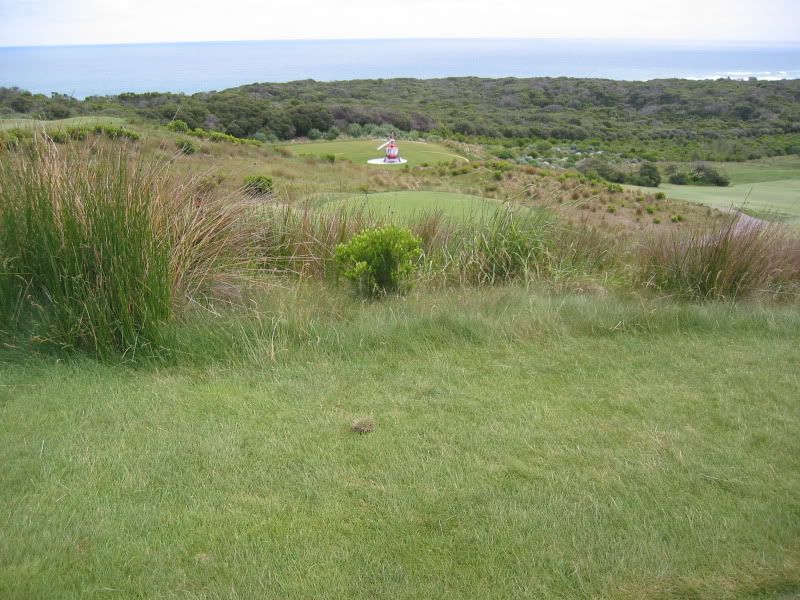
Before we proceed - a disclaimer - I was a member at The National for a dozen years, relinquishing membership several years ago. Some may choose to interpret the review as possessing a degree of bias - so be it.
National (Old) is a visually spectacular place to play - a point I hope is borne out in this tour. The ocean views on The National's Old Course are limitless. The fairways are wide, yet the bordering vegetation ravenous. The greens are large, boasting sweeping curves, sharp ridges, and large mounds, dividing the putting surfaces into "greens within greens". National (Old) executes this design character as well as any other course in the land in my opinion. It makes for tremendous fun, and really rewards thought and creativity. Some feel the green shaping is too exaggerated, and overtly manufactured in appearance, rendering the experience almost goofy. I beg to differ, given that the greens share a commonality with the broader landscape, rising and falling as do the fairways and land around the course. "Unplayable" putts are usually the result of a poor approach, unfamiliarity with the course, a tough pin position for the day, or a lack of thought. And - such putts are not as numerous as some visitors think.
Trent Jones Jnr's course routing is quite an achievement. The entire site was covered in dense vegetation, with fairway channels initially cut from the tea tree by pairs of tractors joined by chains. The gangs slowly forged through the flora to clear playing corridors. The resultant layout is one which exploits landforms, encompasses some great green sites, and affords sheltered areas from where second shots can be played with some respite from harsh winds. Players are often hit by breezes from all directions as they negotiate the eighteen holes in winter and summer alike.
Aerial view of the National (Old) course

Those who have only played the course many years ago might not know that the numbering of the holes has changed. Back in the early 2000s, with a new Clubhouse central to all three courses, National (Old)'s 14th tee was made its first. The sequence in which the holes are played has not changed - just the start and end points of the course. The original opening hole is now the 6th.
The National is really a unique experience. Most travel a little to get there, with the CBD to club roadtrip often taking 80 or so minutes. The Club is perched upon a hillside overlooking a national park, Bass Strait, and the tip of the Mornington Peninsula.
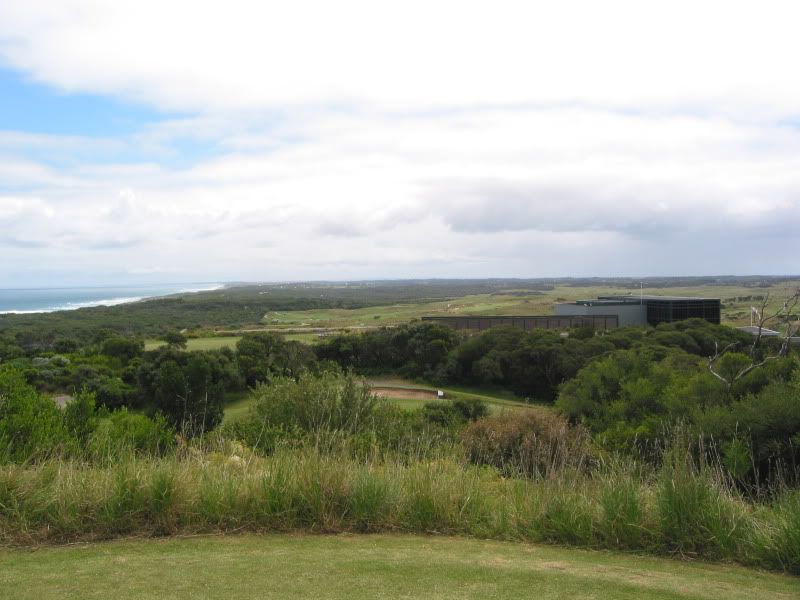
From its rooftop practice putting green affording views of Bass Strait,
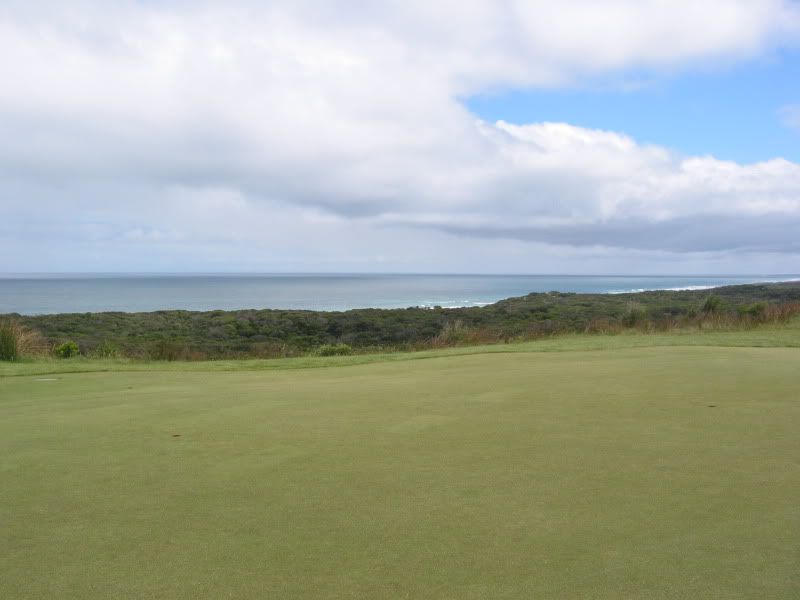
to the contemporary Clubhouse,
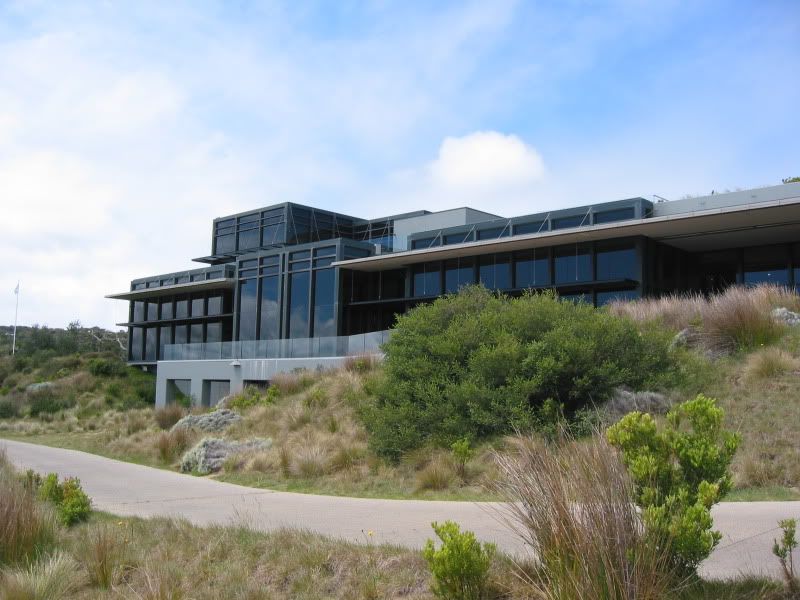
the new warm-up / practice facility,

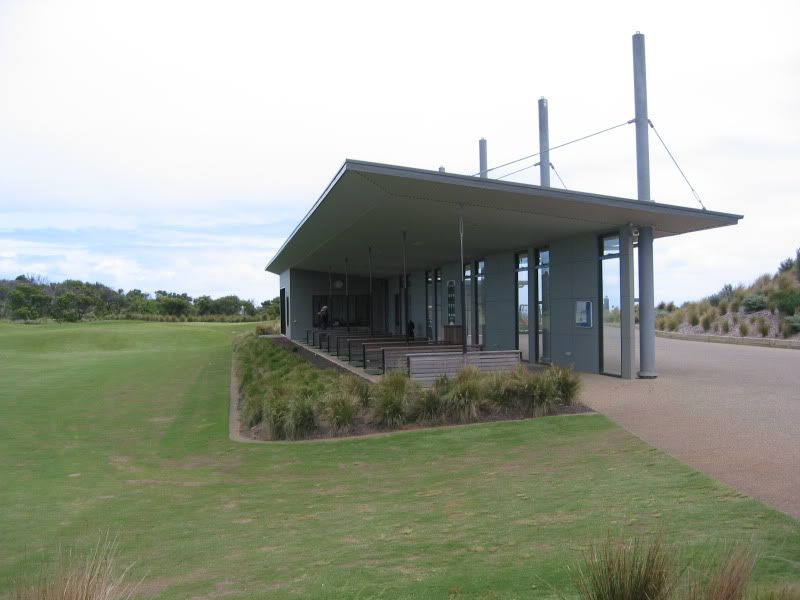
and the limited number of striking coastal homes adjoining the course,
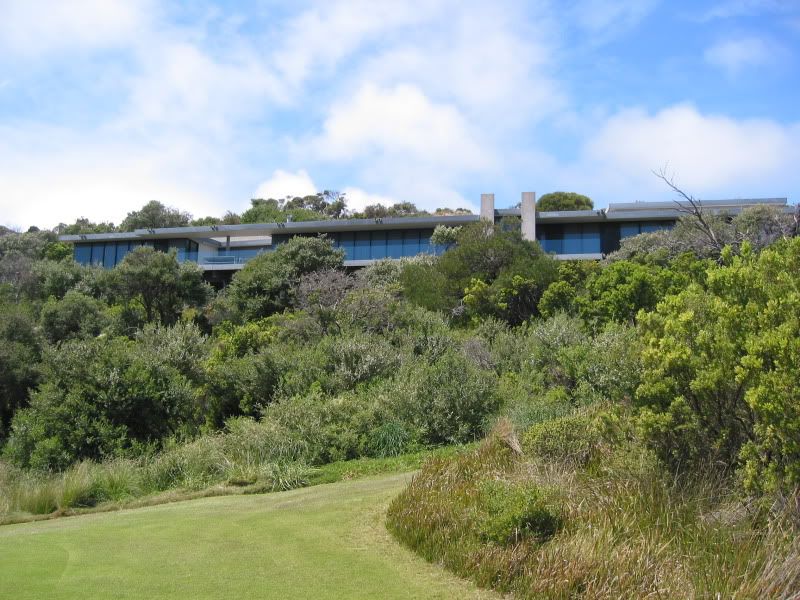
visits to The National leave a lasting impression.
The National is often subject to winds of two clubs strength, occasionally less, and frequently more. South, South-West, North, West and North-East winds are all to be encountered. The regular (blue) member's tees see the Old measure 5873m, while the back pegs stretch it to 6313m. The course takes on a totally different character from the black markers. A course where driver is repeatedly required, and the requirements on approach are more exacting. Still days from the blue markers might see some only hit driver three times, while some may gamble and take it much more often.
Enough of the preamble - here we go. I hope you all enjoy this thread, and contribute to it.
FYI - measurements are from the blue (regular members tees) in METRES unless otherwise stated.
#1, Par 4, 312m, Index 7.
A broad fairway accepts the opening drive of the day. The first tee shot may be played with driver, or as little as 5 iron depending upon the wind. A solitary stately Moonah tree (estimated to be in excess of 700 years old) stands in the middle of the fairway, demarcating the concealed upper right and visible lower left segment of fairway.

A closer look at the Moonah

As is the case with many holes on Old, a variety of teeing grounds mixes up the distance, angle and look of the tee shot. A lower right tee on the first hole sees a shorter carry but much less visible fairway.

The first approach is played to a green bunkered imposingly on the left and right. Interestingly, play from the deeper and more fearsome looking traps on the right is often easier than that from the left greenside bunkers.
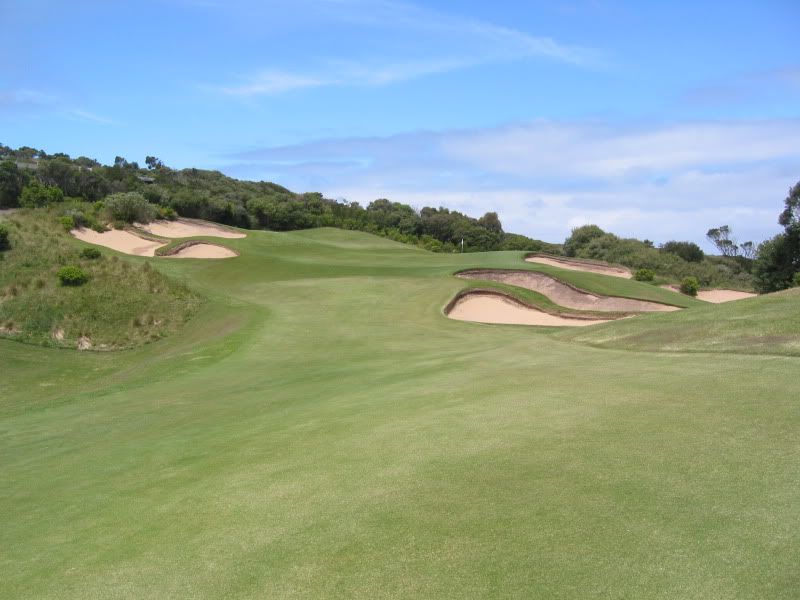
As may be gleaned from the image above, and that below, the putting surface comprises three distinct segments. The front half tilts predominantly to the front-right, while the back left quadrant and rear right segment feature their own less obvious, but no less influential breaks. Putting from the back left, down the tier, to pins on the back right of the green, is extremely quick. This is the first demonstration that Bass Strait exerts a strong influence on break and pace of all putts on Old - a point never to be forgotten.

The strategy on the first is influenced by the pin position. It is often best to hang back a little on the drive. This not only ensures that a large valley short left of the green (often kept as light rough) is avoided, but this also affords a full shot into the green, on which spin and trajectory can be controlled. Too short a club or too much spin on approach can see a ball land close yet skip back to another green segment, or off the front, making the next stroke quite difficult. Front pins can be easily accessed with a short wedge approach from the left of the fairway, where a solitary fairway bunker must be negotiated on the drive. Pins on the back right of the green are best accessed from a drive played right, yet an approach played into a bank back left of the green, with a little fade. So often on Old, the obvious target is the wrong target - a point which sees many suggest local kowledge is worth more at Old than most other courses. Smart use of surrounding mounds and hillocks can yield extremely short putts, much to the amazement of infrequent visitors.